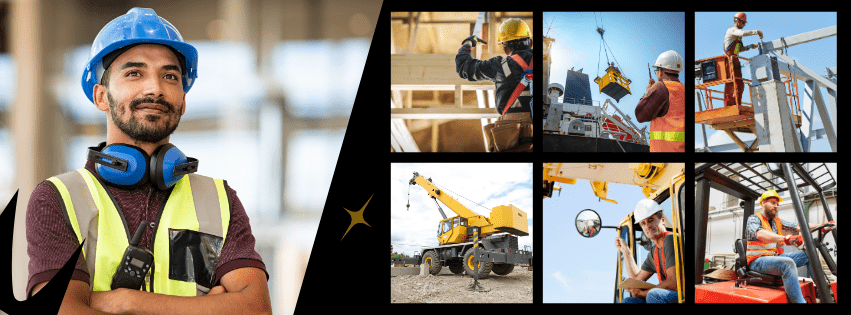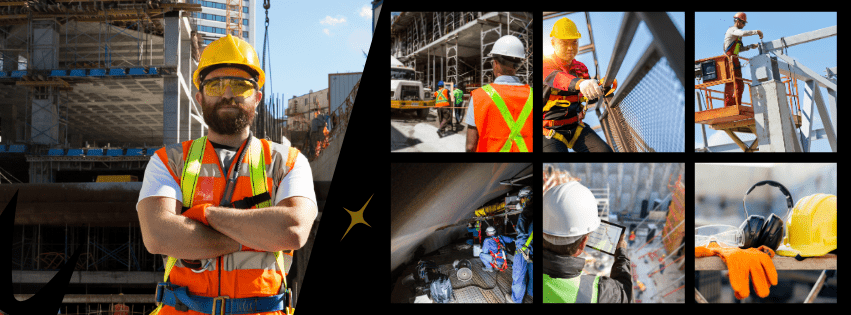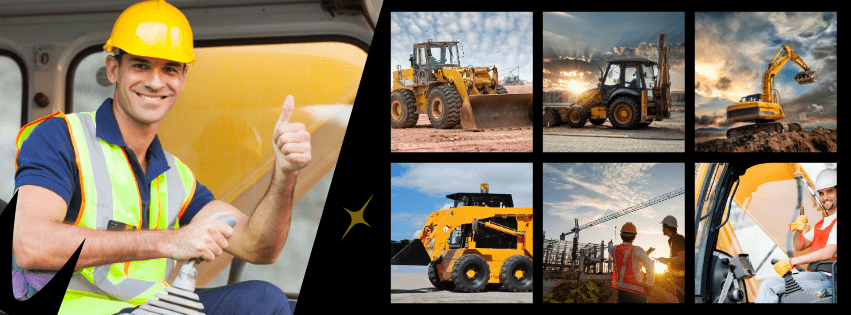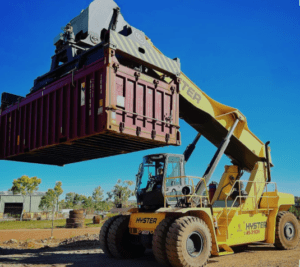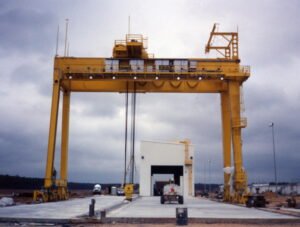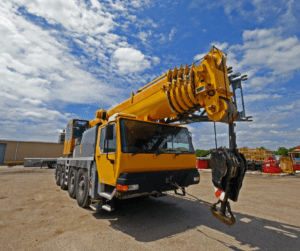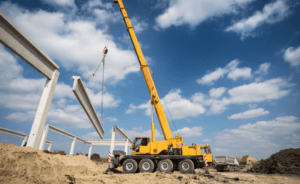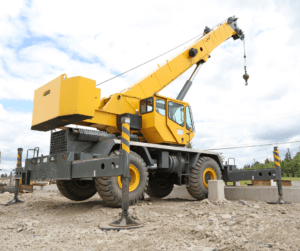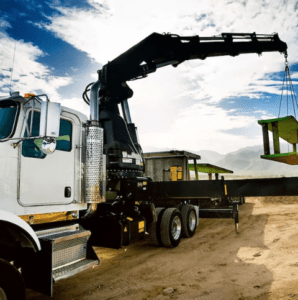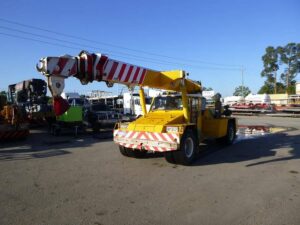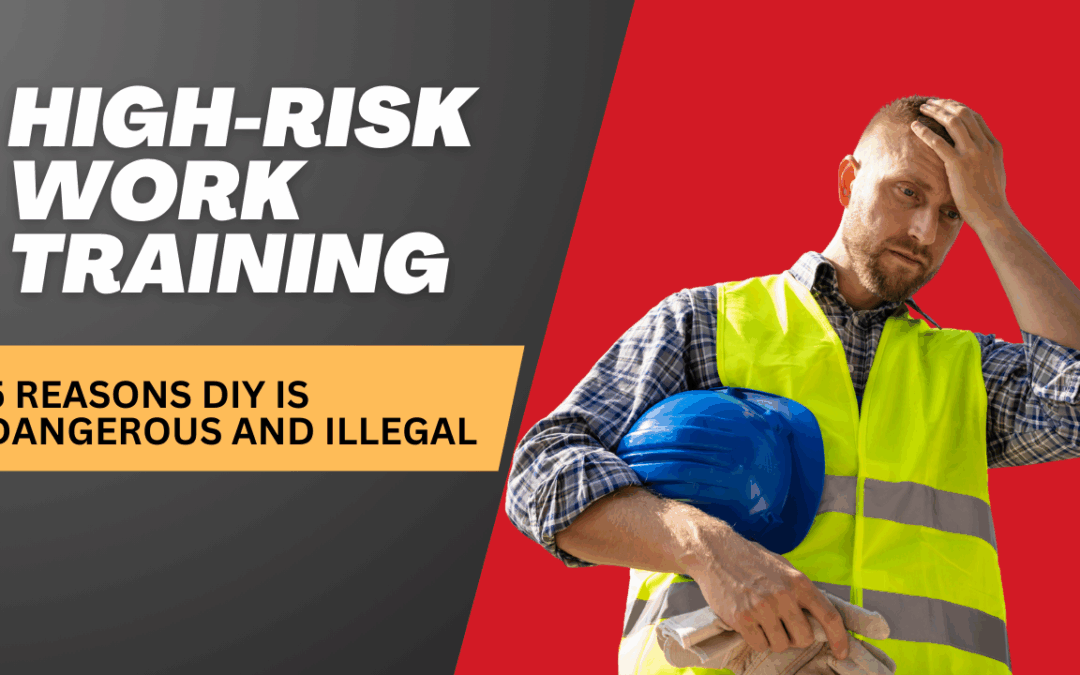
High-Risk Work Training | 5 Reasons DIY is Dangerous and Illegal
The “She’ll Be Right” Attitude’s Fatal Flaw
Australia has a proud tradition of DIY, a “she’ll be right” attitude that often serves us well. But when it comes to high-risk work, that attitude can be downright dangerous, even deadly. We’ve all heard stories of someone who’s “been doing it for years” without a licence, bragging about how they learned on the job. But those stories often omit the near misses, the close calls, and the potential for catastrophic consequences.
Consider the alarming statistics: Safe Work Australia data consistently shows that inadequate training is a significant contributing factor in workplace accidents. In 2023-24, “being hit by falling objects” and “falls from a height” were among the top causes of serious workers’ compensation claims – both directly related to common high-risk work tasks. These aren’t just numbers; they represent real people, real injuries, and real lives impacted.
This article will dismantle the myth that on-the-job experience alone is enough for high-risk work. We’ll lay out five compelling reasons why formal training is not just a good idea – it’s a legal necessity and a crucial investment in safety.
Reason 1. Mastering Safety Protocols, Beyond the Basics
Formal training goes far beyond simply learning how to operate a piece of equipment. It’s about instilling a safety-first mindset and providing a deep understanding of risk management.
Hazard Identification, Seeing the Unseen
Experienced trainers teach you to identify potential hazards, not just obvious ones. This includes;
- Environmental Hazards – Uneven ground, overhead power lines, weather conditions.
- Equipment Hazards – Faulty machinery, incorrect attachments, lack of maintenance.
- Human Factors – Fatigue, distraction, complacency.
Risk Assessment, Calculating the Consequences
Training teaches you how to assess the likelihood and severity of identified hazards. This involves:
- Understanding Risk Matrices – Using standardised tools to quantify risk levels.
- Developing Control Measures – Implementing strategies to eliminate or minimise risks (e.g., using safety harnesses, establishing exclusion zones).
Emergency Procedures. Reacting Right, Reacting Fast
Formal training covers emergency procedures in detail;
- Equipment Malfunction – Knowing how to safely shut down equipment in an emergency.
- First Aid and Rescue – Basic first aid and procedures for rescuing a colleague.
- Incident Reporting –Understanding the legal requirements for reporting accidents.
This level of detailed safety training is simply not achievable through informal, on-the-job learning.
Reason 2. Understanding Legal Obligations, It’s the Law
High-risk work licenses are not optional; they are legally mandated in Australia. The model Work Health and Safety (WHS) Regulations, adopted (with variations) across the states and territories, clearly outline the requirements for licensing.
The Consequences of Non-Compliance
Operating without a required licence carries severe penalties.
- Hefty Fines – Individuals and businesses can face significant fines, often in the tens of thousands of dollars.
- Prosecution – In cases of serious injury or death, individuals can face criminal charges, including imprisonment.
- Stop-Work Orders – Regulators can shut down operations until compliance is achieved.
Employer Liability, Due Diligence is Key
Employers have a legal duty of care to ensure their workers are competent and properly licensed. This includes;
- Verifying Licenses – Checking that employees hold the correct, current licenses.
- Providing Training – Ensuring workers receive adequate training, even if they have prior experience.
- Maintaining Records – Keeping records of training and licensing.
Failing to meet these obligations can expose employers to significant legal and financial risks.
Reason 3. Preventing Accidents and Injuries, The Human Cost
This is the most crucial reason of all. Formal training is about preventing accidents and protecting lives. The statistics are stark, untrained workers are far more likely to be involved in serious incidents.
Common Accidents, Preventable Tragedies
Many common workplace accidents are directly linked to inadequate training.
- Forklift Overturns – Often caused by overloading, uneven ground, or improper operation.
- Falls from Heights – Resulting from incorrect use of ladders, scaffolding, or elevated work platforms.
- Crushing Injuries – Caused by improper rigging, unsecured loads, or machinery malfunctions.
These accidents often have devastating consequences, including;
- Permanent Disabilities – Spinal cord injuries, brain injuries, amputations.
- Long-Term Pain and Suffering – Chronic pain, psychological trauma.
- Fatalities – The ultimate, irreversible consequence.
The Ripple Effect
The impact of a workplace accident extends far beyond the injured worker. It affects;
- Families – Loss of income, emotional distress, caregiver burden.
- Colleagues – Trauma, guilt, decreased morale.
- Businesses – Lost productivity, increased insurance premiums, reputational damage.
Reason 4. Protecting Your Livelihood (and Your Employer’s)
Operating without a licence is a gamble with your career and your employer’s business. The financial consequences can be crippling.
Job Security at Risk
An accident caused by your lack of training can lead to;
- Disciplinary Action – Including termination of employment.
- Difficulty Finding Future Work – A history of safety violations can make you unemployable.
Financial Ruin
The costs associated with unlicensed operation can be substantial.
- Fines – As mentioned earlier, these can be significant.
- Legal Fees – Defending yourself against legal action can be extremely expensive.
- Loss of Income – If you’re injured and unable to work.
- Increased Insurance costs – for both individual and employers.
The cost of compliance is far less than the cost of an accident.
Reason 5. Insurance and Liability, Don’t Be Left Uncovered
Operating without a required licence can have serious implications for insurance coverage and personal liability.
Voiding Insurance Policies
Many insurance policies (workers’ compensation, public liability) contain clauses that exclude coverage if an accident is caused by illegal activity, such as operating without a license. This means;
- No Compensation for Injuries – You may be left to cover your own medical expenses and lost income.
- No Protection from Lawsuits – You may be personally liable for damages caused to others.
Increased Personal Liability
If you cause an accident while operating without a licence, you are far more likely to be held personally liable for the damages. This could include;
- Medical Expenses of Others – Covering the costs of treating injuries you caused.
- Property Damage – Paying for repairs to damaged equipment or property.
- Legal Fees – Defending yourself against lawsuits from injured parties.
Formal Training is Non-Negotiable
Skipping formal training for high-risk work is a reckless gamble with potentially devastating consequences. It’s not just about following the rules; it’s about protecting yourself, your colleagues, and your livelihood. The “she’ll be right” attitude has no place in high-risk work. Invest in formal training, obtain the necessary licenses, and prioritise safety above all else. The cost of training is a small price to pay for a safe and secure future. Don’t become another statistic.
Ready to unlock your full potential? Explore our website further to discover the perfect training path for you. Or, if you have any questions or need personalised guidance, don’t hesitate to contact us. Our friendly team is here to support you every step of the way.
Remember, your dream career is within reach. With AOTA by your side, you can build the skills, confidence, and qualifications you need to succeed. So, take the first step today and start building your future!
Dedicated to your success
Nigel
